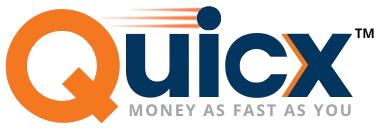As businesses increasingly seek efficient and cost-effective payment solutions, ACH payments have emerged as a compelling option for electronic payments.
This article provides a comprehensive overview of ACH transactions, emphasizing their benefits, including cost savings and convenience in digital transactions.
It addresses the process of setting up ACH payment processing, selecting the appropriate provider, and implementing best practices for security and fraud prevention.
Furthermore, it dispels common misconceptions that may be hindering businesses from adopting this valuable payment method.
What are ACH Payments?
ACH payments, or Automated Clearing House payments, represent a form of electronic payment that facilitates direct bank transfers and direct deposits, thereby enabling efficient and secure processing of financial transactions through electronic funds transfer.
This payment solution give the power to both businesses and consumers to transfer funds electronically, leading to expedited transaction times, ACH payment setup, and enhanced cash management capabilities.
By leveraging the ACH network, organizations can optimize their payment processes, improve overall financial management, and enhance payment systems architecture.
A thorough understanding of the fundamentals of ACH payments is essential for small businesses seeking growth, business efficiency, and improved cash flow through a dependable payment processing system.
Explanation of ACH Transactions
ACH transactions are electronic funds transfers that utilize the Automated Clearing House network to facilitate the secure and efficient movement of money between bank accounts, enhancing payment security and user-friendly interfaces.
The process commences with payment authorization, wherein the sender provides consent for the transaction, typically through an online form or a signed document, ensuring compliance regulations.
Once authorization is obtained, payment gateways assume a critical role in facilitating the transmission of information between banks, ensuring that payment verification is executed. They meticulously verify the details and ensure compliance with prevailing regulations to mitigate the risk of fraud.
Following the processing of the transaction, the ACH network settles the funds among financial institutions, enabling seamless transfers and improved transaction speed.
Throughout this process, transaction monitoring systems operate continuously to detect any anomalies, thereby enhancing the overall security and integrity of the payment process.
Benefits of Accepting ACH Payments
Accepting ACH payments provides numerous advantages to businesses, including considerable cost savings, increased convenience, and the potential for improved cash flow management and business scalability.
These benefits ultimately contribute to business growth, revenue growth, and foster customer trust in e-commerce environments.
Cost Savings and Convenience
The cost savings associated with ACH payments arise from lower transaction fees compared to traditional credit card processing and wire transfers, rendering it a financially efficient payment method for businesses, improving their business strategy.
Specifically, businesses can save between 0.5% and 3% on transaction fees by utilizing ACH payments, with savings dependent on the transaction size and volume. For instance, a company processing $100,000 monthly in credit card transactions may incur fees of approximately $3,000; in contrast, using ACH could reduce those fees to around $500, thereby significantly enhancing overall cash flow.
Additionally, the adoption of ACH payments facilitates quicker payment reconciliation and minimizes manual bookkeeping tasks, resulting in improved operational efficiency. This streamlined approach conserves valuable time and enhances financial management, enabling businesses to allocate resources more effectively and maintain better control over their cash flow.
Setting Up ACH Payment Processing
Establishing ACH payment processing requires careful consideration of several steps, including integration with accounting software.
- These include selecting a reputable payment provider,
- comprehending the necessary ACH documentation,
- and integrating the appropriate payment processing software into the existing financial systems.
Step-by-Step Guide for Businesses
This step-by-step guide for businesses outlines the essential phases of ACH payment processing, commencing with enrollment and concluding with payment verification and automation, leading to improved payment insights.
By adhering to these structured steps, organizations can enhance the efficiency of their financial transactions while ensuring that payments remain secure. The initial phase, enrollment, necessitates the gathering of requisite documentation and the establishment of a business relationship with a bank or payment processor.
After enrollment, it is imperative to implement verification processes that confirm the identity of payees in order to mitigate the risk of fraud. Businesses must also conduct close monitoring of transaction histories to identify any anomalies.
The integration of robust payment automation tools can optimize workflows, enabling timely settlements and comprehensive reporting, while upholding stringent standards of payment security to safeguard against unauthorized transactions.
Choosing the Right ACH Payment Provider
Selecting an appropriate ACH payment provider is a crucial decision for businesses, as it affects transaction efficiency, customer experience, and the overall payments strategy, impacting merchant accounts and financial planning.
This decision necessitates careful consideration of several key factors.
Factors to Consider
When evaluating potential ACH payment providers, it is essential to consider several factors, including transaction fees, the provider’s reputation, the quality of customer support, and the provider’s ability to scale with the evolving needs of the business, such as multi-channel payments.
These elements significantly impact the efficiency of business operations and the overall customer experience. Transaction fees can vary considerably and may influence profit margins; therefore, selecting a provider that offers competitive rates is crucial for effective financial management.
The provider’s reputation, which can be assessed through user reviews and industry recognition, is instrumental in ensuring reliable service and maintaining trust within the business relationship. Additionally, high-quality customer support is essential; prompt assistance can effectively address payment processing issues that may arise unexpectedly.
The scalability of payment solutions is vital for growing enterprises, as it ensures that they can adapt seamlessly to increasing transaction volumes and the evolving requirements of financial software.
By carefully assessing these factors, businesses can make informed decisions that align with their objectives for growth and customer satisfaction.
Security and Fraud Prevention with ACH Payments
Security and fraud prevention are essential considerations when processing ACH payments. Businesses must implement comprehensive measures to safeguard their financial transactions and protect customer data from potential threats, enhancing user authentication and payment tracking.
Best Practices for Protecting Your Business and Customers
Implementing best practices for payment security is essential for safeguarding both businesses and customers against fraud and unauthorized transactions when utilizing ACH payments, ensuring secure payments and payment compliance.
Regular audits serve as a critical component of this process, ensuring that payment systems are current and that vulnerabilities are identified and addressed before they can be exploited.
Maintaining robust transaction monitoring enables businesses to promptly detect and respond to suspicious activities. Additionally, it is vital for organizations to invest in employee training on security protocols, as well-informed staff members can serve as the first line of defense.
By prioritizing secure payment processes, efficient payment tracking, and fostering a culture of customer trust, businesses not only minimize risks but also enhance their reputation within the marketplace.
Common Misconceptions about ACH Payments
Despite the increasing popularity of ACH payments, numerous businesses continue to harbor common misconceptions regarding this payment method, such as the efficiency of ACH settlements.
These misunderstandings often pertain to the security, efficiency, and overall suitability of ACH payments as a viable payment option.
Addressing Misunderstandings and Concerns
To effectively address misunderstandings and concerns regarding ACH payments, it is crucial to clarify common issues related to payment security, transaction limits, and processing times. This understanding not only enables businesses to make informed decisions but also fosters confidence in the utilization of ACH technology.
For instance, many stakeholders express apprehensions regarding the security of electronic transactions; however, the National Automated Clearing House Association (NACHA) reports that ACH processing has a remarkably low fraud rate, with only 0.004% of transactions being disputed.
Regarding transaction limits, businesses may not be aware that ACH allows for higher limits compared to other payment methods, making it suitable for significant business transactions.
It is important to note that while processing times for ACH payments can range from one to three business days, this is considerably more efficient than traditional methods. This efficiency translates to improved cash flow management and enhanced financial reporting capabilities for organizations.
A comprehensive understanding of these elements can substantially enhance payment compliance and overall operational effectiveness.
Frequently Asked Questions
How do I set up ACH payments for my growing business?
To set up ACH payments for your growing business, you will need to first establish a merchant account with your bank or a third-party payment processor with expertise in digital banking. This will allow you to receive ACH payments from your customers, streamlining your payment collection process. Once your account is set up, you can start accepting ACH payments by providing your customers with your unique ACH payment information, such as your routing and account number, ensuring smooth customer transactions.
What are the benefits of accepting ACH payments for my business, including improved accounting systems?
Accepting ACH payments offers several benefits for growing businesses. These include faster and more cost-effective payment processing using advanced financial technology, increased security, and improved customer convenience, enhancing user experience design. ACH payments also allow for recurring billing, making it easier to manage subscription-based services or monthly payments from customers, thereby boosting customer retention.
Do I need any special software or equipment to accept ACH payments and integrate with online invoicing?
No, you do not need any special software or equipment to accept ACH payments. As long as you have a merchant account and your customers have a checking or savings account, you can process ACH payments, even enabling cross-border payments for greater reach. However, you may choose to use an ACH payment processor or a payment gateway to streamline your payment process and leverage payment integration capabilities.
Are there any fees associated with accepting ACH payments, including service fees?
Yes, there may be fees associated with accepting ACH payments. These fees vary depending on your bank or payment processor, and may include per-transaction fees, monthly fees, and setup fees. Be sure to compare different options to find the most cost-effective solution for your growing business, considering immediate funds access for better cash flow management.
How long does it take for ACH payments to process, and how does it impact your transaction history?
The processing time for ACH payments can vary depending on your bank or payment processor. Typically, ACH payments take 1-3 business days to process, but some processors may offer faster processing times for an additional fee. It’s important to communicate the processing time with your customers to manage their expectations, mitigating ACH payment risks and enhancing client accounts management.
Is it safe to accept ACH payments for my growing business, considering risk management strategies?
Yes, it is safe to accept ACH payments for your growing business. ACH payments are subject to strict security and encryption standards to protect your business and your customers’ sensitive information, ensuring compliance with ACH rules. However, it’s important to choose a reputable payment processor and to educate yourself on best practices for ACH payment security, such as using ACH software for better ledger management and payment workflows.




